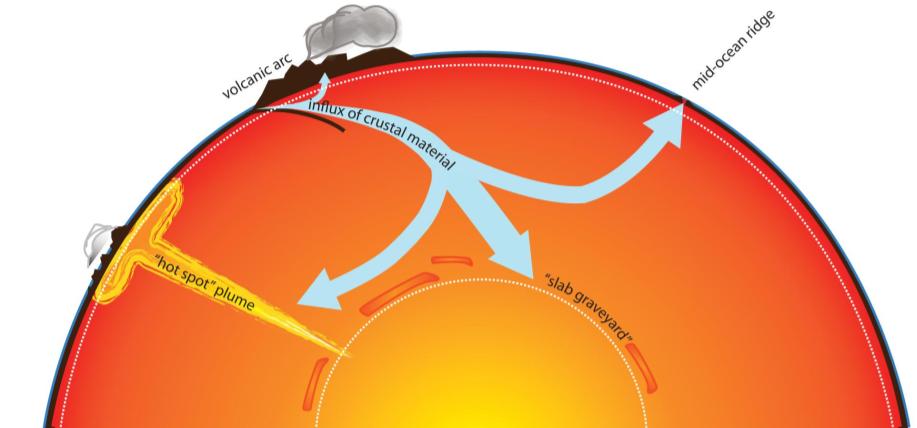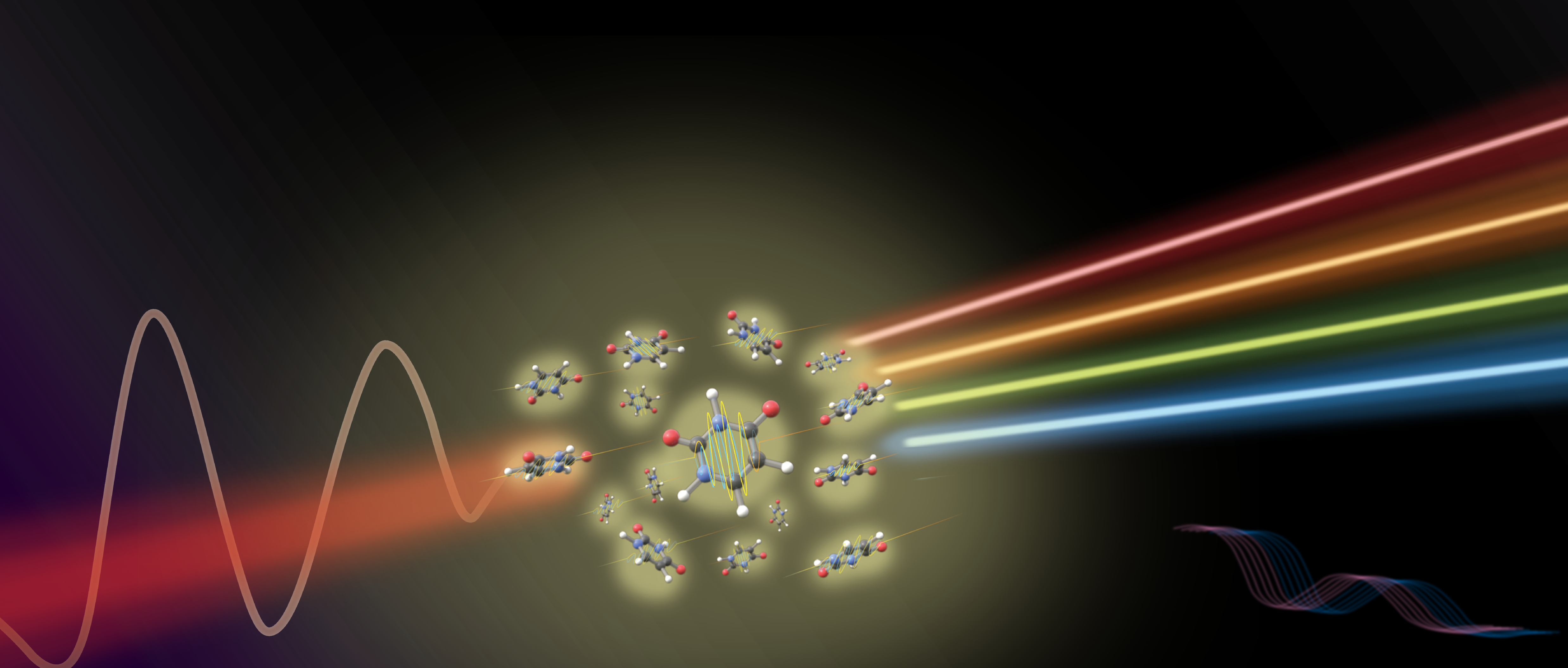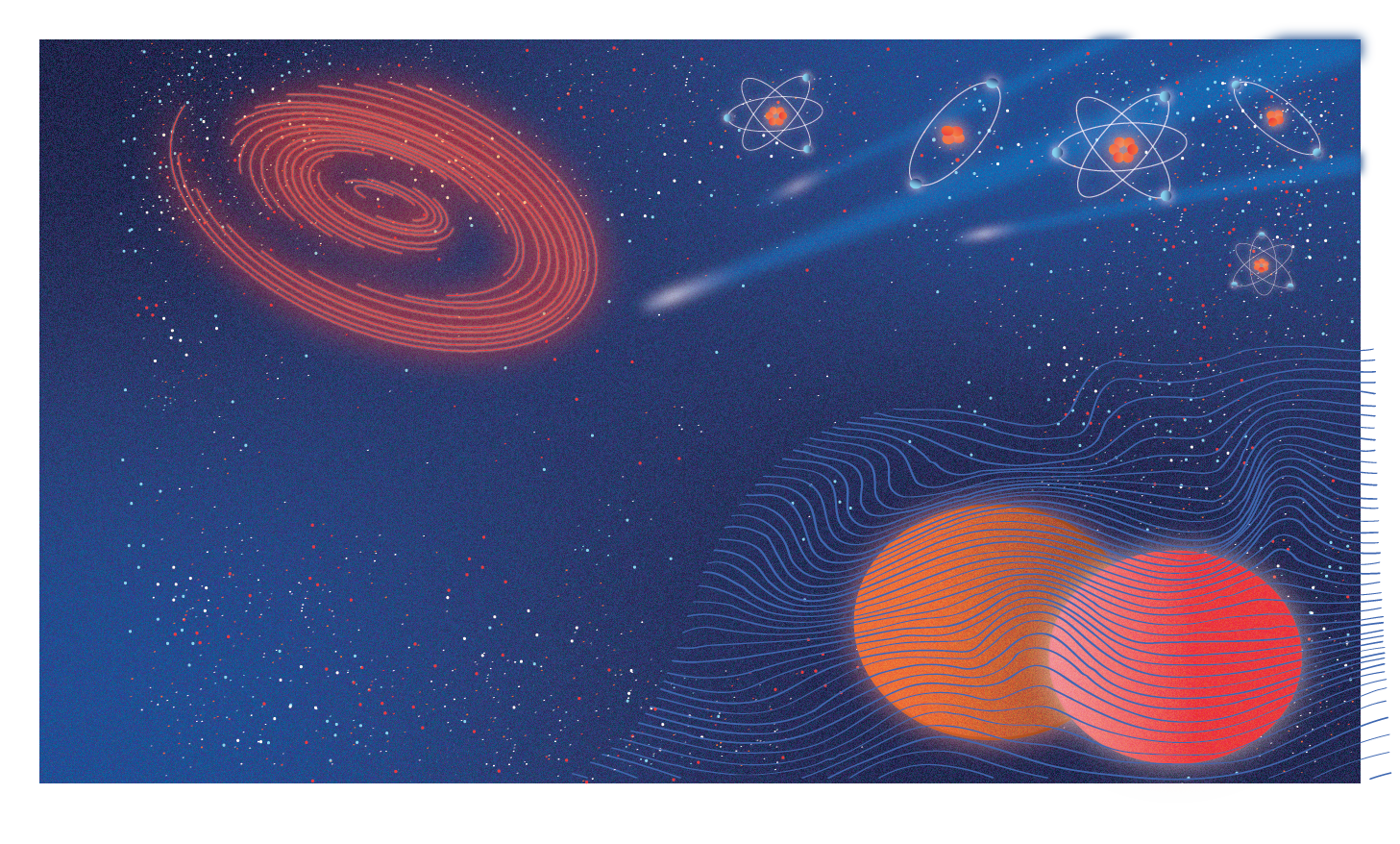
In the depths of the Earth lurks a mysterious phenomenon: earthquakes are occurring in regions where they should be impossible, and we don’t know what’s causing them. Unlike Professor Lidenbrock, the protagonist of Jules Verne’s classic Journey to the Center of the Earth, we cannot descend down a volcanic shaft to observe the processes that are responsible. Instead, we are left with the task of reproducing a portrait from a shadow. The key to unlocking this mystery lies in the study of deep earthquakes.
“What we know about global seismology stems from having global networks. We need data,” says Douglas Dreger, professor of Earth and Planetary Science (EPS) at UC Berkeley. In the 1960s, during the peak of the Cold War, the United States pioneered the development of the Worldwide Standardized Seismograph Network (WWSSN), primarily to monitor nuclear testing. A consequence of this network was the sudden availability of high quality data of natural seismicity. By studying the depth of earthquakes measured by the WWSSN, seismologists realized that, in some regions of the world, earthquakes were mapping out the trajectory of the crust sinking into the Earth. They had just discovered evidence for the process of subduction which, along with seafloor spreading, is an important component of the theory of plate tectonics.
Today, an earthquake of even modest intensity is picked up by hundreds, if not thousands, of seismographs around the world. Seismologists infer a great deal of information from these measurements, including the depth, energy, orientation, and geometric properties (size and shape) of the ruptures that produced the earthquakes. One way of determining the depth of the earthquake focus (the point of origin) is to identify two paths that a pressure wave might take to reach a seismogram: a direct path (P), and a path that involves a reflection from the outer surface of the Earth (pP). “You measure the time difference between P and pP. If you know something about the velocity of the waves, you can compute depth,” says Dreger.
 P waves travel downward as they leave the focus. pP waves travel upwards as they leave the focus and reflect off the surface of the Earth. Seismologists measure the time at which the P wave and the pP wave reach a measuring station. The difference in this time can be used to calculate the depth of the source.
P waves travel downward as they leave the focus. pP waves travel upwards as they leave the focus and reflect off the surface of the Earth. Seismologists measure the time at which the P wave and the pP wave reach a measuring station. The difference in this time can be used to calculate the depth of the source.
For a long time, seismologists believed that all earthquakes had a depth less than 60 kilometers from the surface. This belief was based on our understanding of how materials fail at high pressures. “Sixty to 100 kilometers corresponds to about three or four gigapascal [pressure],” says Raymond Jeanloz, a professor in EPS at UC Berkeley. That is about 30,000 to 40,000 times atmospheric pressure. “That pressure of three or four gigapascal is experimentally well established as being the ballpark at which rocks go from being brittle to ductile.” Brittle rocks fail by sudden and explosive fracturing. Ductile rocks fail by slow and large deformations. “[Pressure] makes a rock want to smush like play-doh rather than crack like a rock would when you hit it with a hammer,” explains Thomas Smart, a graduate student at EPS who works with Jeanloz to conduct high-pressure experiments on minerals. Temperature also increases as we go deeper into the Earth, which makes rocks even more ductile. This relationship between pressure, temperature, and ductility has been known for well over a century now.
However, ever since Japanese seismologist Kiyoo Wadati made some of the earliest measurements of earthquake depth in the 1920s, scientists have been baffled by the regular occurrence of earthquakes well beyond the previously established theoretical limit of 60 kilometers. While the vast majority of earthquakes have a depth less than 60 kilometers, there are relatively frequent earthquakes in the 100 to 300 kilometer range and the 500 to 700 kilometer range. The magnitude 4.2 earthquake in 2004 near Vanuatu (about 3,000 kilometers north of New Zealand) was measured to a depth of 735 kilometers, and is the deepest earthquake on record. “[At these depths], the sorts of mechanisms that we invoke for shallow earthquakes just don’t work,” says Dreger. “Why we have deep earthquakes is still an open and fundamental question.”
What are deep earthquakes?
Modern geophysicists agree upon the following classification system. An earthquake is considered to have a:
Shallow focus if the focus is at a depth less than 60 kilometers. *Intermediate focus if the focus is at a depth greater than 60 kilometers but less than 300 kilometers. *Deep focus if the focus is at a depth greater than 300 kilometers.
The term “deep earthquake” is used loosely to refer to intermediate-focus and deep-focus earthquakes. Going by this classification, approximately one in four measurable earthquakes can be classified as a deep earthquake. This might seem like a small number, but if you consider the fact that we have no convincing explanation for this phenomenon, it is certainly a significant number.
 Dataset includes almost 50,000 earthquakes recorded between 1976-2017 available in the Harvard Centroid Moment Tensor Catalog
Dataset includes almost 50,000 earthquakes recorded between 1976-2017 available in the Harvard Centroid Moment Tensor CatalogSome deep earthquakes can be extremely powerful. In 1994, a magnitude 8.2 earthquake shook Bolivia from a depth of 630 kilometers. The 2013 magnitude 8.3 earthquake in the Sea of Okhotsk had a depth of about 600 kilometers and is the most powerful deep-focus earthquake on record. The depth of these earthquakes is approximately the same as the distance between San Francisco and Los Angeles. If there is a magnitude seven shallow focus earthquake in Los Angeles, would we feel it here? “We wouldn’t feel it here in McCone Hall,” says Dreger, referring to the home of EPS, “and that’s just because the further you are from an earthquake, the more spread out the energy becomes.” A deep-focus earthquake that is right below your feet is actually quite far away. But because the interior of the Earth is more efficient at transmitting seismic waves than the surface of the Earth, a powerful deep earthquake can be felt over a large region of the world. Residents in high-rise buildings in San Francisco and Toronto were able to feel the 1994 Bolivia earthquake.
Deep earthquakes share certain common features that have given seismologists important clues as to what might be causing them. For starters, they occur almost exclusively in subduction zones, where one tectonic plate is forced under another tectonic plate and is dragged into the mantle. In fact, approximately two out of three deep focus earthquakes (i.e. those at a greater than 300-kilometer depth) occur in one particular subduction zone: the Tonga-Kermadec subduction zone, near the northern tip of New Zealand. The fact that deep earthquakes only occur in subduction zones is part of why they are rare.
 The Kermadec islands are located on the Tonga-Kermadec subduction zone which harbors the majority of deep focus earthquakes in the Earth. Fig (a) from mapswire.com, Fig (b) from Wikimedia Commons.
The Kermadec islands are located on the Tonga-Kermadec subduction zone which harbors the majority of deep focus earthquakes in the Earth. Fig (a) from mapswire.com, Fig (b) from Wikimedia Commons.Not only do deep earthquakes occur in subduction zones, but they also seem to orient themselves along the direction of subduction. When a material is under stress, it is always possible to choose an orientation that describes the stress purely in terms of tension and compression. In the picture below, if we look along the sides of the orange rectangle, we would describe the state of stress as a shearing. However, if we looked along the diagonals, we would describe the state of stress as a tension or compression. The diagonals are called the principal axes of the state of stress. The principal axes describe the natural orientation of the stress, and might give us clues about the processes generating them.
 It is always possible to describe a state of stress as a combination of tension and compression.
It is always possible to describe a state of stress as a combination of tension and compression.Intermediate-focus earthquakes between 100–300 kilometers are characterized by tensile stress along the direction of subduction. Deep-focus earthquakes at 600 kilometers are characterized by compressive stress along the direction of subduction. “It’s almost as though, in the intermediate regime, the weight of the slab below is pulling on the slab [causing tension],” says Jeanloz, “farther below, at 600 kilometers, it’s as though the slab is hitting something stiff [causing compression].” Renowned UC Berkeley seismologist Perry Byerly was instrumental in developing many of these ideas.
 Intermediate and deep focus earthquakes orient themselves along the dip of the slab. Intermediate focus earthquakes are characterized by tension. Deep focus earthquakes are characterized by compression.
Intermediate and deep focus earthquakes orient themselves along the dip of the slab. Intermediate focus earthquakes are characterized by tension. Deep focus earthquakes are characterized by compression.The processes behind intermediate and deep focus earthquakes release more energy compared to their shallow counterparts. Seismologists quantify this by a term known as “stress drop”. This is a measure of the difference in the stress across a fault before and after an earthquake. “Very deep earthquakes definitely have higher stress drops [and are] more energetic,” notes Dreger. Large amounts of energy release and efficient transmission of this energy through the mantle means deep earthquakes are an excellent source of information about the internal structure of the Earth. Seismologists can use this information to essentially “image” large regions of the mantle just like a CT scan. This process is known as seismic tomography. “The earthquakes provide a source of illumination,” says Jeanloz. It’s like a flash bulb going off 600 kilometers inside the Earth, which is then used by seismologists to develop a picture of the interior. Studies of this data by seismologists like Barbara Romanowicz, professor in EPS at UC Berkeley, have revealed complex structures such as mantle plumes which are reminiscent of the patterns in a lava lamp.
What might be causing deep earthquakes?
The Earth’s mantle is a high-pressure and high-temperature environment. Geological minerals that are subducted to these depths undergo many transformations along the way. There is broad consensus among scientists that deep earthquakes are a consequence of these transformations. We will look at dehydration embrittlement and phase transitions as two particular examples of high-pressure transformations.
Dehydration embrittlement
Prior to 2009, Oklahoma was seismically relatively quiet. There were maybe one or two earthquakes in a year with magnitude greater than three. In 2015, there were more than 900 magnitude 3+ earthquakes in the state. The culprit for this dramatic increase in seismicity was wastewater injection into the Earth. While these earthquakes were not deep earthquakes, they are an excellent illustration of how the addition of water into tiny pores in rocks can weaken them and make them more prone to brittle fracture.
Pressure increases frictional force between two surfaces. It is more difficult to slide a heavy box, which exerts greater pressure, or force per area, on the floor compared to a light box. In a similar fashion, pressure applied on a material prevents it from fracturing. “Any fracture plane has large normal forces on it that the motion on the plane is suppressed,” explains Jeanloz. If we inject a fluid into this material, however, it exerts a force that opposes the externally applied pressure. This reduces the effectiveness of the external pressure in preventing rupture from taking place. This process is called dehydration embrittlement.
 External pressure increases friction between particles preventing them from slipping. The fluid pressure, called “pore pressure”, opposes the external pressure. This reduces friction between particles, allowing slip planes or fracture planes to form.
External pressure increases friction between particles preventing them from slipping. The fluid pressure, called “pore pressure”, opposes the external pressure. This reduces friction between particles, allowing slip planes or fracture planes to form.Mineral physicists believe that such a process is responsible for intermediate-depth earthquakes. The water in this case comes from the minerals in the rock. At sufficiently high pressure, this water is released. “At 100 kilometer [depth] it is widely thought that these earthquakes are due to dehydration of serpentine”, says Smart. Serpentine is a family of minerals that includes asbestos. These minerals are formed when subducting slabs combine with water from the ocean and are heated up. The mineral incorporates the water into its crystal structure. At a pressure corresponding to about 100 kilometers in depth, this water is released by the mineral into the pore spaces of the surrounding rock. In the 90s, the Jeanloz group was among the first to measure acoustic emissions, which are basically miniature earthquakes, during high-pressure experiments on serpentine. They attributed these acoustic emissions to dehydration embrittlement. Intermediate earthquakes occur in the exact depth range in which dehydration of serpentine is expected to take place. “Intermediate earthquakes are not as big of a conundrum”, says Smart, “deep focus earthquakes are a little bit more weird.”
Solid-state phase transitions
It is difficult to imagine a process that carries water to 600 kilometers and beyond, where the deepest earthquakes occur. This makes dehydration embrittlement less plausible as an explanation for these earthquakes. However, there are other changes within the Earth that may be responsible. “Starting around 300 - 400 kilometer depth, the bulk of the minerals in the mantle undergo phase transition,” says Jeanloz. When a mineral undergoes a phase transition, it maintains its chemical composition, but changes the arrangement of its atoms resulting in different physical properties. Coal and diamond are both composed of carbon atoms, yet display remarkably different properties because the arrangement of the carbon atoms is different. “Our best understanding of deep earthquakes is that it is somehow tied to the range of stability of olivine and where it undergoes transition to spinel,” says Dreger. Olivine, a magnesium and iron silicate, is one of the most abundant minerals in the Earth’s crust and upper mantle. At high pressures, olivine transforms into a spinel structure that is slightly more dense and occupies less volume.
 The range of stability of olivine and spinel depends on temperature and pressure. Spinel is the stable phase at high pressure. Olivine is stable at low pressure. The exact pressure at which olivine transforms to spinel depends on the temperature.
The range of stability of olivine and spinel depends on temperature and pressure. Spinel is the stable phase at high pressure. Olivine is stable at low pressure. The exact pressure at which olivine transforms to spinel depends on the temperature.As olivine transforms into spinel, it shrinks in volume. This shrinking action generates stress in the mineral at the interface between olivine and spinel. The mechanics of this transformation could be behind the deepest earthquakes on the planet. But this explanation is far from satisfactory. “A lot of people don’t like phase transformation as an explanation for deep focus earthquakes despite the profound coincidence that deep focus earthquakes happen right where these materials are transforming,” says Smart. Critics argue that if a change in volume is causing seismicity, then the resultant earthquake must be similar to an implosion caused by the collapse of rocks. “You’d expect to see an implosion,” says Smart, “but we don’t. We see two rocks sliding past each other.” If this phase transition is responsible, we might expect to be able to produce miniature earthquakes in the lab at these pressures. “In my experiments we don’t see any acoustic emissions from olivine going through that transition,” says Smart.
There are other hypotheses, but none are without criticism. “It’s really about how materials fail, in the most general sense,” says Jeanloz, “My hope is that if there is advancement on this very specialized topic of high-pressure failure, it might help inform low-pressure failure too, where things are much less controlled and there is a lot more going on.
While seismologists have some theories to explain the mystery of deep earthquakes, they are still a long way from fully understanding this puzzling phenomenon. Currently, much work is being done to better measure and study deep earthquakes and laboratory earthquakes. For example, new, more accurate sensors are being developed in EPS in collaboration with Steven Glaser, professor in Civil and Environmental Engineering at UC Berkeley, which will allow researchers to study these miniature laboratory earthquakes in unprecedented detail. As more advances are made, researchers hope to answer a centuries-old question, thus advancing our knowledge of deep and shallow earthquakes alike.
Design: Arjun Narayanan
Featured image: Erin Walden





